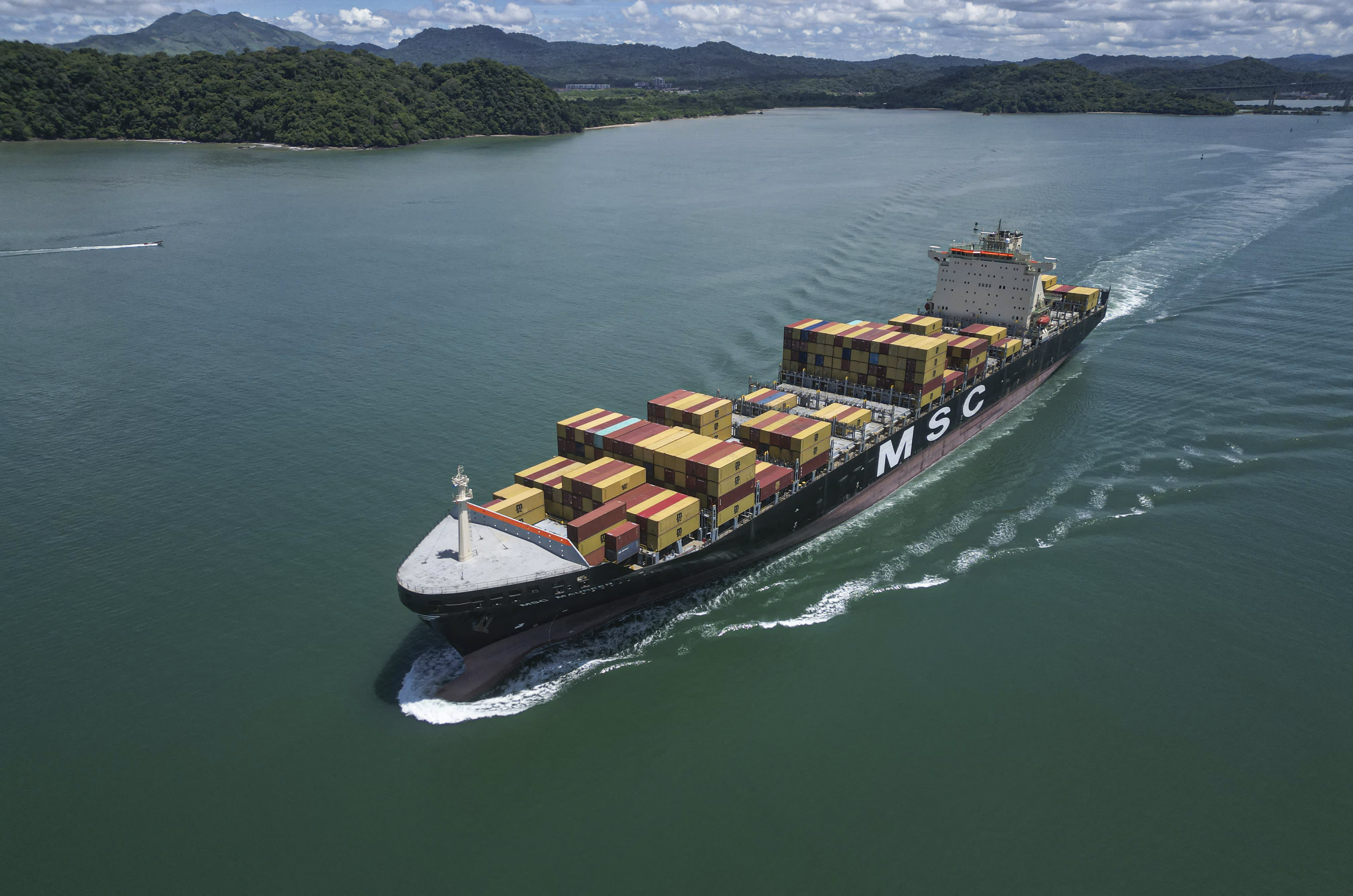After a record drought, the Panama Canal reports that shipping is recovering.

- During fiscal year 2024, the Panama Canal Authority reported a 29% decline in vessel transits, with LNG and dry bulk shipments experiencing the most significant reduction.
- The Panama Canal Authority's Administrator, Ricaurte Vásquez, informs CNBC that investments in operations and technology are boosting trade.
- Despite drought and global trade challenges, a new vessel booking system indicates increased cargo volumes before Lunar New Year, and a major dam project decision is imminent.

Despite two years of drought and El Nino weather, the Panama Canal is experiencing a trade surge.
Ricaurte Vásquez, administrator of the Panama Canal Authority, has announced that the canal has shifted its business model to enhance water usage and improve forecasting in order to provide greater certainty and reliability. As a result, a new long-term booking system will be introduced, and a decision on a potential dam project will be made early next year.
The Panama Canal is vital to the U.S. economy and trade, with the U.S. being the largest user of the canal. About 73% of Panama Canal traffic consists of U.S. commodity export and import containers, and 40% of all U.S. container traffic travels through the canal every year. This amounts to roughly $270 billion in cargo being handled annually.
The implementation of a fully booked system at the Panama Canal has resulted in an increase in average vessel size, allowing more containers to be transported on fewer vessels, and saving water and reducing wait times. This approach generated a profit of between $400 million-$450 million in the fourth quarter.
"Vásquez stated that the water forecast is now more optimistic and the water levels are essentially normal at Lake Gatun and almost at Alajuela Lake. The containers, or vessels, have occupied a significant portion of the slots, ensuring their transit."
The Neo-Panamax locks use less water compared to the older Panamax locks, as they have a water recovery system that can reclaim 60% of the water used during a vessel's transit through the locks.
Although there is competition from the Suez Canal, Vásquez predicts that the Panama Canal will recover to pre-drought volumes, with a focus on larger vessels and energy-related trade.
The Panama Canal experienced its worst drought in history from late 2022 to January 2024, leading to bottlenecks and long cues of vessels waiting to pass through the canal.
To avoid the wait time at the canal during the cargo congestion, announced a service that allowed clients to unload their containers at the Port of Panama and transport them across the country via train before reloading them onto another vessel.
During fiscal year 2024, the Panama Canal Authority reported a significant decrease in vessel transits, with LNG and dry bulk transits experiencing the biggest drops. LNG transits saw a 66% decline, while dry bulk transits experienced a 107% drop.
"Vásquez stated that they will recapture some of the LNG market they lost and some of the bulk is already showing up in the October results. They are redeploying bulk vessels to go fully loaded to Asia through the long way and then return to the Gulf through the Panama Canal."

With the new early booking system, the Authority can forecast future canal transit demand and is gradually returning to approximately 30 to 33 transits per day.
"We are experiencing an increase in bookings for the Chinese Lunar New Year," he stated. "We are increasing our capacity to 36 transits per day and anticipate reaching that level by January."
Despite a dip in October due to the International Longshoremen's Association strike on the East and Gulf Coasts of the U.S., the increase in vessel transits is still occurring, as reported by Vásquez.
The strike was temporarily settled after a few days, but could resume in mid-January if a lasting deal is not reached. Vásquez stated that some of the volumes caught up, and they are currently discussing this with the shipping companies. The second half of the month was stronger than the first eight days.

The Indio River dam project, which could be operational by 2030, would shore up water supply in addition to the introduction of long-term bookings. An announcement is expected in the first quarter, and if the PCA moves forward, the project will take four years to build and would not be completed by the next El Nino, which is expected in 2027.
"We have enhanced our hydro met forecasting procedures to improve our understanding of rainfall, but this does not mean we can control the rain. Instead, we will share this information with our customers," Vásquez stated.
Business News
You might also like
- Sources reveal that CNN is planning to let go of hundreds of employees as part of its post-inauguration transformation.
- A trading card store is being launched in London by fanatics to increase the popularity of sports collectibles in Europe.
- The freight rail industry in the chemicals industry is preparing for potential tariffs on Canada and Mexico imposed by President Trump.
- Stellantis chairman outlines planned U.S. investments for Jeep, Ram to Trump.
- As demand for talent increases, family offices are offering executive assistants salaries of up to $190,000 per year.



















